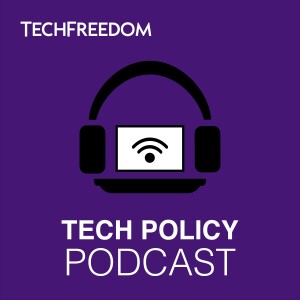
The Supreme Court has never heard a Section 230 case—until now. Earlier this month, the justices agreed to review Gonzalez v. Google, in which the plaintiffs argue that YouTube’s “targeted recommendation” of videos falls outside Section 230 immunity. How did we get Section 230? Why is it important? What would the Internet look like without it? Emma Llansó, director of the Free Expression Project at the Center for Democracy & Technology, joins the show to explain how Section 230 came to be, how it has been implemented over the last quarter century, why Congress’s one amendment of it (via FOSTA) was a disaster, and why the upcoming Supreme Court case is so crucial.
More Episodes
From the Vault: Progress — With Alec Stapp
 2024-10-25
2024-10-25
 2024-10-25
2024-10-25
387: Crypto Regulation — With Paul Grewal
 2024-10-17
2024-10-17
 2024-10-17
2024-10-17
386: Major Questions About Major Questions
 2024-10-03
2024-10-03
 2024-10-03
2024-10-03
385: AI Snake Oil
 2024-09-23
2024-09-23
 2024-09-23
2024-09-23
384: The Facebook Antitrust Case
 2024-09-09
2024-09-09
 2024-09-09
2024-09-09
383: SCOTUS Internet Non-Law
 2024-08-27
2024-08-27
 2024-08-27
2024-08-27
382: AI and Everything
 2024-08-13
2024-08-13
 2024-08-13
2024-08-13
380: Quantum Computing
 2024-07-22
2024-07-22
 2024-07-22
2024-07-22
378: Broadband Regulation at the Zombie FCC
 2024-07-01
2024-07-01
 2024-07-01
2024-07-01
377: AI and Wicked Problems
 2024-06-21
2024-06-21
 2024-06-21
2024-06-21
375: Tech Facts and Fallacies
 2024-05-20
2024-05-20
 2024-05-20
2024-05-20
374: Politics and Technological Change
 2024-05-09
2024-05-09
 2024-05-09
2024-05-09
#373: Porn and the First Amendment
 2024-04-25
2024-04-25
 2024-04-25
2024-04-25
#372: Spacesuits!
 2024-04-11
2024-04-11
 2024-04-11
2024-04-11
#371: So You Want to Ban TikTok
 2024-04-01
2024-04-01
 2024-04-01
2024-04-01
012345678910111213141516171819
Create your
podcast in
minutes
- Full-featured podcast site
- Unlimited storage and bandwidth
- Comprehensive podcast stats
- Distribute to Apple Podcasts, Spotify, and more
- Make money with your podcast
It is Free
- Privacy Policy
- Cookie Policy
- Terms of Use
- Consent Preferences
- Copyright © 2015-2024 Podbean.com






